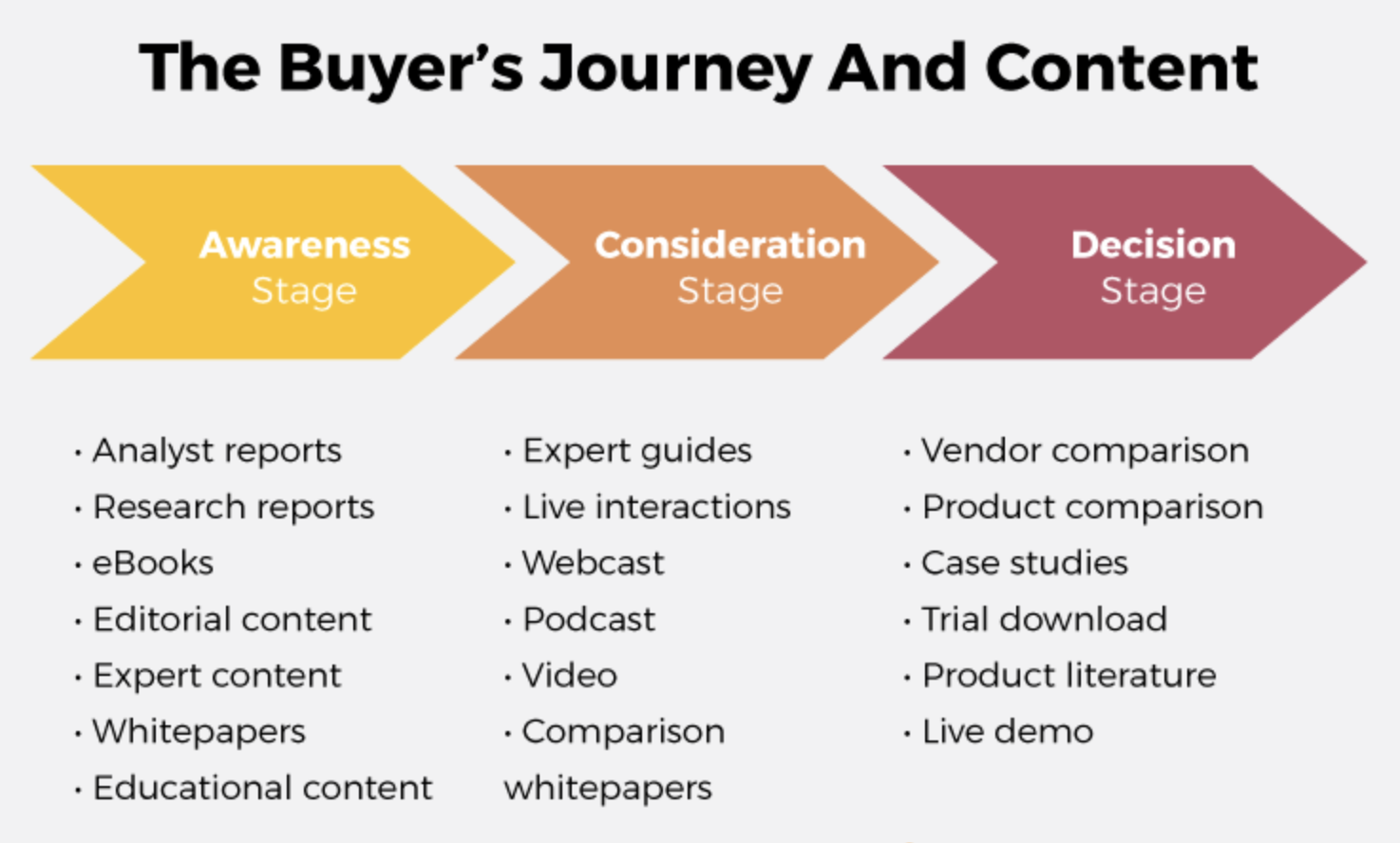

2020 SEO Best Practices for B2B Businesses


There are many challenges in the B2B environment that make SEO different from B2C. For that reason, B2B SEO deserves a guide of its own.
For starters, the B2B environment is much lower in traffic. For every piece of content, you will get a considerably lower amount of monthly visitors than for B2C terms.
On top of that, companies and professionals are much more conservative when buying. There are multiple decision-makers, and it’s therefore very hard to get sales from new visitors that are just starting to know your brand.
These are just a few of the challenges that completely change the way you should approach SEO in the B2B realm.
To prepare you, we brought you a comprehensive and practical guide with some of the best SEO practices for B2B businesses in 2020:
Best practices to develop an effective B2B SEO strategy in 2020
To reach your audience, there’s no way around it - you’re going to need to develop an effective SEO strategy.
Professionals are very different to normal customers in many ways. Naturally, that means that the best practices to develop a B2B SEO strategy are different. Lets start from the beginning:
Target awareness/TOFU keywords and carefully move leads through the sales cycle
The keywords to target in B2B are different because the sales-cycle is much longer for businesses and professionals.
In B2C businesses, it’s often worth it to focus a large percentage of your efforts on targeting bottom-of-the-funnel keywords with a high purchase intent because a lot of times that’s all it takes to make a sale.
But not when the sales-cycle is a lot longer in the B2B context. Businesses don’t want to risk their relationships with customers or deal with the consequences of purchasing low quality products. They have a lot more to lose than customers, and therefore need to be carefully nurtured until they trust and know enough about your brand to make a purchase.
-
B2C strategy: Larger focus on keywords near the bottom of the funnel.
-
B2B strategy: Larger focus on awareness keywords at the top of the funnel. (though middle and bottom of the funnel keywords are still important)
Your leads need to be effectively and consistently nurtured and carried through the funnel until they reach the point where they are ready to purchase your product. Make sure that your strategy takes into account every stage of the buyer’s journey - from start to finish. This can typically be done by an email nurturing campaign or by retargeting your prospects with paid advertising.

Thats all well and good, but how do you create content that effectively takes B2B customers through the funnel?
Here’s the key:
Learn to find pain points
The whole point of content is to solve pain points. To create effective content, you’ll need to learn how to:
- Find your audience’s pain points.- Create valuable content that solves your audience’s pain points in a unique way.
- Apply technical SEO to show Google who’s the boss.
- Do well on other ranking factors, such as backlink profile and E-A-T profile.
We hear it all the time - a crucial aspect of effective content is addressing your audience’s pain points.
But do you actually know what they are?
Before doing anything else, you need to start by accurately pinning them down because if you don't do this well, nothing else will work. You can’t solve pain points if you haven't even found them.
So, how do you find them? The first step is to know exactly who you’re targeting.
Create a buyer persona
In B2B, the best way to approach your content strategy is by creating buyer personas. Like we said in our previous guide to SEO for B2B businesses, there’s less importance on keyword research to pick topics in B2B than in B2C - and you should pick your target terms by defining the pain points of your buyer persona. I’ll explain why in the next headline.
Here are a few tips to create your buyer personas:
Gather information about your current clients. Are they veteran CEOs? Are they entrepreneurs trying to start a new business? What common patterns can you see?- Take a look at your competitors - most of them will share at least 1 or more buyer personas.
- Interview or survey customers.
- Ask your sales team for help.
- Common sense. Sometimes, creating your buyer personas doesn’t require much more than good old common sense.
A basic buyer persona description should include your buyers’ location, industry, interests, age, and any relevant traits your buyers have in common.
It should also include common problems and how your buyer will acquire your products to solve them.
In B2B SEO, it’s common to have a high number of buyer personas. Having eight or more isn’t unheard of. If you only have two or three, consider if there are more you’re missing.
Defining pain points
Once your buyer personas are assembled, it’s time to put them to use.
Start by picking one of your most important buyer personas. Then, create a list of problems and questions they may be dealing with.
Let’s say we’re a SaaS business for startups that sells a marketing analytics tool, and our main buyer persona is startup CEOs.
Write the pain points that come to your head:
- “I’m having a hard time increasing our visibility”- “Our leads barely convert.”
- “No matter what we do, most of our traffic bounces off our website”
- “Our current software is having problems, but other alternatives are too expensive”
In a few minutes, you should have a fairly sized list. We’ll show you how to use these pain points for keyword research in a moment.
Since you’re eventually going to run out of ideas, here are a few tips to find more pain points:
- Ask, survey, or interview customers. You’re looking for their pain points, so it makes sense to ask them directly. In exchange, you can offer discounts or free products.
- Ask or research businesses in the same industry.
- Look for common questions and problems in social media groups and forums. Great examples include Facebook groups, Slack community groups, and Linkedin groups.
Best B2B SEO practices for keyword research
Use pain points to find topic ideas
Keyword research is not the same in B2B as in B2C. Instead of relying too much on keyword tools and traffic metrics, it’s a much better strategy to find customer pain points, and then turn these pain points into topic ideas for each stage of the buyer’s journey. (I explain why in the next headline)
Here’s how:
Before you start, have the stages of the buyer’s journey in mind:
- Awareness: The customer becomes aware of a problem it needs to solve.- Consideration: The customer considers what solutions there are for its problem.
- Decision: The customer knows the solution and now needs to choose a vendor.
Now have your pain point list on hand, and turn pain points into questions. Ask yourself, what would your target customer type on search engines to solve a pain point?
Here’s an example.
Pain point: Most of our visitors bounce off our website
Questions:
-How do I prevent visitors from bouncing off my website?
-Why are my bounce rates so high?
-What are the main causes of high bounce rates?
Simple, right?
The next and final step is to turn those questions into implementable topic ideas:
-4 reasons why your home page bounce rates are high
-7 traffic analysis tools to help you fix your high bounce rates
-The most common causes of high bounce rates and how to fix them.
You’ll have a lot of good topic ideas before you get the chance to create content for each of them, so it’s a good idea to save them on a chart like the following:
Topic ideas
Buyer persona: CEOs of startups
Our example Brand: B2B SaaS brand that sells a marketing analytics tool
|
Awareness (The customer becomes aware of a problem it needs to solve) |
Consideration (the customers is considering what options there are to solve the problem) |
Decision (The customer knows the tool or service it needs to solve the problem, and now needs to pick a vendor) |
|
# reasons why your bounce rates are high |
Is it really necessary to use a marketing analytics tool? |
# best traffic analysis tools to help you fix your high bounce rates |
|
How to track website traffic in an easy way |
What to do to make data analysis easier |
Popular marketing analytics tools compared |
|
Why are your conversion rates so low? Here’s the answer |
Can you do marketing data analysis without a software tool? |
The cheapest marketing analytics tool |
|
How to know what you’re doing wrong in your marketing campaigns |
What options you have to measure traffic and conversions |
Marketing analytics tools for startups |
Sorting your topic ideas in these categories is very useful because like I said before - you need to take B2B prospects through the whole buyer journey to have a good chance of converting them. Knowing what each article accomplishes within the buyer’s journey is essential to understand the purpose of each individual piece of content. It will also give you a big-picture view of your content strategy.
More keyword research
Picking your topics based on highly favourable keyword metrics isn’t as good of a strategy for B2B SEO as it is for B2C.
Due to the lower traffic in B2B marketplaces, evaluating keywords based on metrics provided by keyword tools is more difficult. If you try to measure metrics with Google ads keyword planner, all you’ll get most of the time is the minimum result of both volume and competition. It’s difficult to pick your topics based on these limited results.
Nevertheless, there are still “gems” in keyword tools if you look very well. Especially if you use a paid keyword tool. You can also use keyword tools to learn more about the terms that you found with the pain point method I just covered.
Common indicators of good B2B keywords:
- Very high relevance. Terms with visitors likely to convert. In B2B, relevant terms take priority over high-volume terms. If visitors aren’t interested in your solution, it probably won’t matter if the volume is high.- Manageable competition that gives you a chance to rank well.
- TOFU keywords. Most of the time, you should look for TOFU keywords as B2B customers have a much longer sales-cycle. Sometimes there are good BOTU terms worth targeting, but less commonly.
- Related to your solution. The search term is related to your product or service.
If your keyword tool doesn’t show you much about the competition, you can use Google’s search results to measure it by looking at the quality of the websites ranking on the first page.
Keyword tools can get very tiring and aren’t the only way to find terms, but they work very well and are also a great way to evaluate topic ideas, such as those that you create based on pain points.
How to show Google you’re the boss
After picking keywords to target and creating content that effectively solves the pain points of relevant searchers, we are left with one missing piece:
Showing search engines your content deserves to rank well.
Technical SEO
Technical SEO is incredibly important to rank well on Google. It is one of the key factors that you will need to get in place to rank your B2B content.
Technical SEO is out of the scope of this article, but have in mind that Google takes a close look at the various aspects of your website’s technical SEO and uses this data to determine where to rank your content in the search results.
There are many great resources online and on our blog to learn more about this topic.
Here are a few to get you started:
- New to SEO? Make The Art of SEO Your Bible- Local SEO: 5 Questions with our SEO Ninja
- International SEO: 5 Questions with our SEO Ninja
Building backlinks
Your website's backlink profile is one of the main ranking factors Google considers. If high-authority websites link to your content, Google sees it as proof that you’re creating valuable content backed up by industry leaders.
The most important takeaways to build relevant backlinks:
-
Create shareable content that people find value in. If your content is unique and special, people will naturally want to link to it.
-
Reach out to your audience, business partners, and people you’ve networked with that may find it useful. You’re more likely to get backlinks from people you’ve built relationships with.
-
Quality is better than quantity. 1 link from an authority website is much better than 10 from low-quality websites
More insights